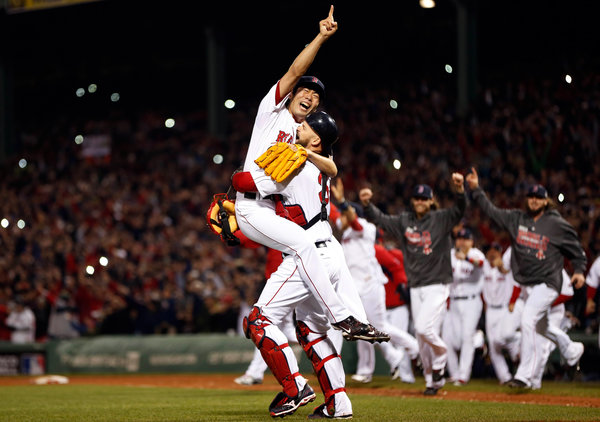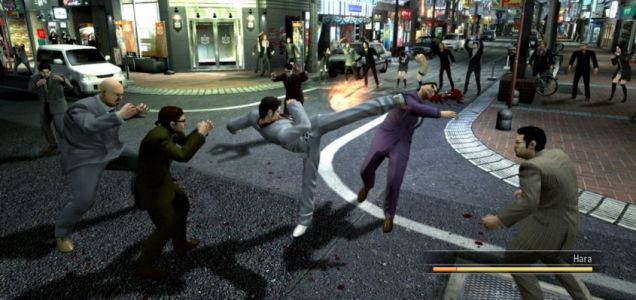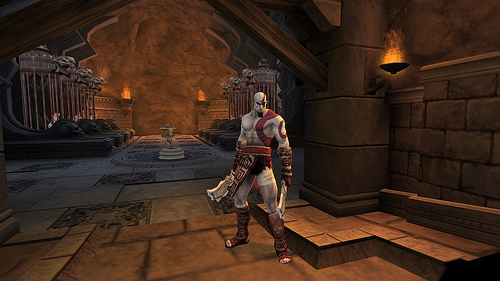Last updated on January 16, 2014
I tried to explain this before, and perhaps in one other instance, but I notice a recent rash of “realness” in the gaming community. Or, at the least, the circles in which I frequent see video games constantly avoiding “reality” as a construct of the Western mindset. See, when Haggar in Final Fight regains health through eating meat on the ground, rather than reconstructive surgery on his tailbone for all the piledrivers he gave those Mad Gear Gang fools. This sort of symbolic representation makes people angry; realism comes second to mechanical depth, for reasons that make perfect sense. Realism isn’t often “fun”.
So, in that spirit, we can easily define video games as less “real” and more “melodramatic”. Huh? Let me explain.
If we often look to books, film, and television, we see two distinctive modes of thought on how stories should display their characters to us. On the one hand, our culture recently embraced the idea of “real” characters, ones we can relate to and human ones who represent our own fears and failings play out on screen. The way in which they deal with conflicts and the like turns into the focus of said narratives while deriving their emotional power.
On the other hand, some authors and writers refuse to write in this contemporary function; rather, they choose to display “melodrama”. According to Wikipedia, apparently melodrama refers to eliciting emotion from an audience by placing a character in dire straits, but it can easily refer to soap operas, anime (yes, anime, I am not saying this in a negative light rest assured), and probably ever JRPG ever created. Ben Singer, who wrote Melodrama and Modernity: Early Sensational Cinema and Its Contexts, identifies five categories to this ambiguous mode of narrative. We can use a number of video games to show these examples too!
The first defining characteristic of melodrama comes from its goal to incite pathos, or appealing to the audience’s emotions. If you have ever watched the Aeris death scene (sorry, decade-old spoiler), that’s exactly the kind of storytelling gambit it was. The point isn’t to be a meaningful statement about Sephiroth’s emotional resistance, or Cloud’s identity crisis, but to elicit a reaction for the audience. It doesn’t purely need to derive from sympathetic vibes, though; we can see nearly every scene in the Yakuza series overflows with emotional appeals to an upstanding criminal who just wants honor and loyalty, finding none of it.
And, in that sense, the second characteristic of overwrought or heightened emotion makes sense. Why do people immediately engage in fistfights all the time in Yakuza, when a simple gun would suffice in the real Japanese underworld? Because, silly, it makes the game incredibly exciting to watch! Often, the game pumps up the conflicts to such hilarious degrees that, having already identified pathologically with the protagonist, you’re ready and raring to go. See nearly every JRPG in its attempts, through tragic events, to make you hate the villain (and love him for his insane characterization, like Kefka from Final Fantasy VI).
Of course, that can’t happen with a clearly defined moral polarization (i.e., extreme good vs. extreme evil), Often, it’s the heart of gold versus the cackling, insanely evil person. Could either of these extremes appear in real life? Maybe! Yet, they continue to appear in our media, not out of some attempt to simplify the world, but to tell an exciting and wonderful story. And heck, how many people do you see tell the story of World War II as if it was good versus evil? Even our history contains such narrative tropes (not to exclude how sports often casts everything into a narrative mold with team X’s big comeback or player Y’s defeat).

And to tell a page-turning thriller requires that you throw the audience for a loop. Hence, melodramatic works often impose non-classical narrative structure, such as the use of extreme coincidence or the often derided deus ex machina (basically, God or an unseen force drops in and create conflicts or forces the story into a particular way. It’s often seen today as a cheap storytelling device). Most people would say that JRPG stories make no sense; that’s because the overall structure isn’t designed in the classical sense, but to excite and entertain you as you move along the game. It’s almost amazing that they can sustain such long lengths, but that’s the point: melodrama keeps you engaged if you let your emotions go into the experience.
Lastly, and most importantly, all melodrama focuses on what we would now call “sensationalism”. We can define this as an emphasis on action, violence and thrills. Video games, as you know, remain particularly suited to providing engaging action, thrills, and violence in large portions. The addition of interactivity only enhances the melodramatic affect. In recent years, Western developers enhanced such experiences through the combination of “epic” music, visceral coercive force, and Greek mythological stylings we came to know as the “God of War archetype”. Many games copied that same style soon after, leading to the current American fascination with the “cinematic” game. Japan, of course, did this for many years beforehand in nearly every genre, from action (Devil May Cry) to roleplaying (Final Fantasy). Their aesthetic sensibilities only add to the pleasure of the melodrama.
Take all this into account, and you’ll see that video games morphed into the perfect medium for pulpy melodrama, given that they allow an already emotionally-engaged audience (in whatever way, via mechanics or narrative) to participate as active players in the scheme of its inner workings. So it is that a whole generation grew up on this particular style, and now begin to reject it from the vicissitudes of society’s changing whims on effective tales. We neglect them as “teenage fantasy” and then turn our back or “nostalgia”, or some such nonsense.
I grew up on this; it’s treasure, not trash. Perhaps I am molded by the heights of extreme emotion and the downs of tragedy within each and every JRPG released in the early 1990s. Even so, I also concurrently read the Bible, a book of supreme melodrama in the classical sense. Andrew Spurr says it much better than I:
If Jamie had been granted a flash of insight, mine was to dawn more slowly. Days later, as I browsed the children’s Bibles in the local bookstore, I realised they were all the same: David, Goliath, wise men, shepherds, fishermen, loaves and fishes, and an angel who looked almost indecently innocent. No stars falling out of the sky, earthquakes, rivers of blood, and certainly no angels on horseback. It was as if 4,000 years of religious vision and imagination had been taken on by Enid Blyton, and Enid Blyton had won. The churches, desperate to retain their influence, have been co-conspirators in this inoculation of a weak representation of faith into children which has rendered them immune to the real thing when they get to an age when life starts to bite back. Then we wonder why our young abandon church at the age when they experience the mini-apocalypse of their hormones kicking in.
The Bible’s full of strange and mysterious thing, narratives that both excite and terrorize in equal measure. Marvel at the visions of the prophets, especially Ezekiel’s visions, or the sword-tongued Jesus of Revelation 4:
12 Then I turned to see the voice that was speaking with me. And having turned I saw seven golden lampstands;13 and in the middle of the lampstands I saw one like [j]a son of man, clothed in a robe reaching to the feet, and girded across His chest with a golden sash. 14 His head and His hair were white like white wool, like snow; and His eyes were like a flame of fire. 15 His feet were like burnished bronze, when it has been made to glow in a furnace, and His voicewas like the sound of many waters. 16 In His right hand He held seven stars, and out of His mouth came a sharp two-edged sword; and His face was like the sun [k]shining in its strength.
17 When I saw Him, I fell at His feet like a dead man. And He placed His right hand on me, saying, “Do not be afraid; I am the first and the last, 18 and the living One; and I [l]was dead, and behold, I am alive forevermore, and I have the keys of death and of Hades. 19 Therefore write the things which you have seen, and the things which are, and the things which will take place after these things. 20 As for the mystery of the seven stars which you saw in My right hand, and the seven golden lampstands: the seven stars are the angels of the seven churches, and the seven lampstands are the seven churches.
These visions hold great power and meaning. They say alot about God’s prophecies combined with our imaginative faculties. God gives us striking imagery both as warning and as wonder. Good triumphs over evil, bad always loses to the power of God. We often forget that in the midst of our Christian walk: the universe is really a melodramatic one, where the Christ in His grief and anguish over Creation’s fall gave up His One and only Son to death, only to rise again.
John 11:35 makes a whole lot more sense now, doesn’t it? Jesus wept, indeed!
The material that resembles this we slowly slip away, losing our imaginative faculties while submitting to the cult of “the real”. Perhaps reality’s much more wild, wooly, and strange than we could possibly imagine. Why can’t our video games do this? I don’t understand this impulse, and I never will. Life’s too short and amazing for that.




